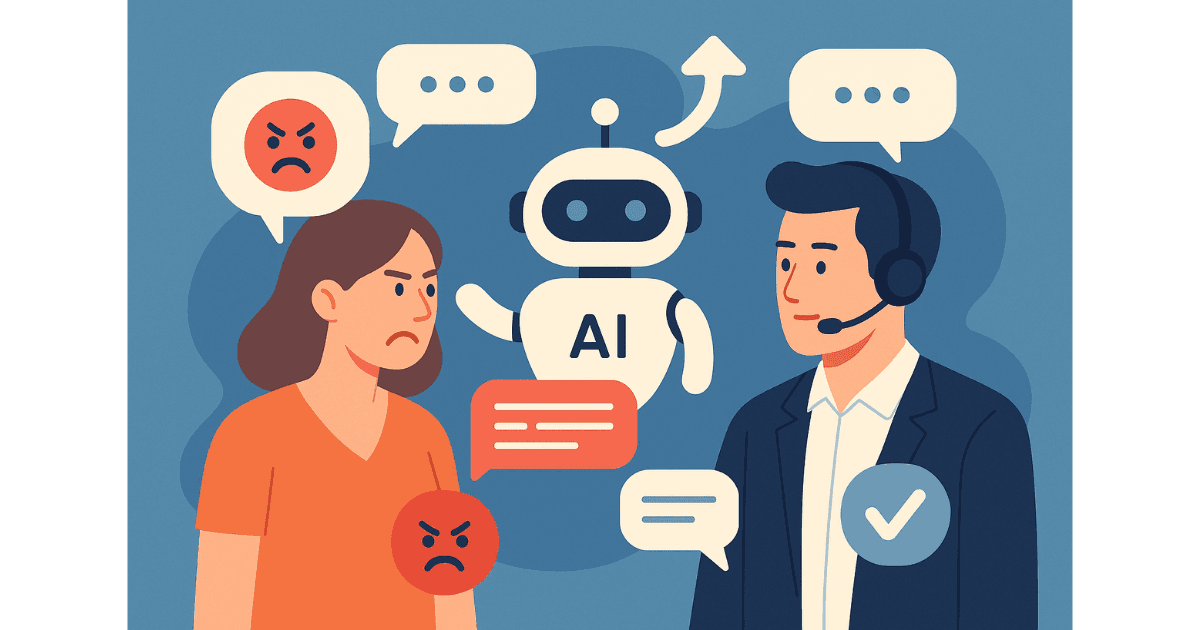AI has become the centerpiece of nearly every corporate strategy. In 2024 alone, companies invested over $250 billion globally into AI, with $34 billion specifically into generative AI like chatbots and large language models (LLMs). Startups rode the wave too, securing $131 billion in funding as investors backed the promise of faster, smarter, always-on customer service.
For support leaders, the pitch is tempting: automate repetitive queries, keep the help desk running 24/7, and slash operational costs. But as many companies learned the hard way, AI without oversight can create as many problems as it solves.
Chatbots, no matter how advanced, can hallucinate facts, misunderstand tone, or provide responses that violate company policies or regulatory requirements. A single wrong billing explanation or tone-deaf reply can lead to viral screenshots, churned customers, and even compliance trouble.
So how do companies leverage AI’s speed and scale without risking trust and reputation?
The answer is a practical approach known as Human-in-the-Loop (HITL).
How HITL Works in Customer Service
HITL isn’t about checking every AI-generated response. It’s about strategically stepping in only when the stakes are high. Most conversations remain automated, but when the AI detects a situation where nuance, empathy, or policy compliance is critical, a human agent takes control.
Here’s how it works in practice for a telecom provider:
A customer messages the AI assistant, angry about repeated dropped calls and threatening to cancel their service.
- AI’s Role: The AI handles initial troubleshooting, checking for local outages, verifying the customer’s account, and offering basic solutions (like device resets). It also monitors keywords and sentiment—phrases like “cancel,” “frustrated,” or “angry”—flagging the interaction as a potential churn risk.
- Escalation Trigger: When the conversation hits this risk threshold, the AI automatically escalates the chat to a human agent. It doesn’t just hand it off; it shares a summarized transcript and even drafts a recommended response (for example, offering a free month of service or fast-tracking a network check).
- Human’s Role: The agent reviews and personalizes the response—adding empathy, adjusting the tone, and making sure any compensation aligns with company guidelines. They send the final reply and, if needed, escalate internally for technical resolution.
- Outcome: The frustrated customer feels acknowledged and valued, the issue is resolved with a human touch, and 90% of other routine customer interactions continue to run on autopilot.
Why HITL Matters
This model does three things exceptionally well:
- Balances speed and care: AI handles the bulk of work, but humans prevent high-risk moments from turning into disasters.
- Protects brand reputation: Sensitive cases get the personal treatment they deserve, avoiding viral missteps.
- Improves AI over time: Every human edit or decision feeds back into the model, teaching it to handle similar cases better in the future.
The Bottom Line
The global AI boom shows no signs of slowing, but in customer service, speed without oversight is a recipe for risk. Human-in-the-Loop isn’t a step backward, it’s how companies turn AI into a trusted partner instead of a liability.
By letting AI do what it does best and stepping in only when needed, businesses can deliver fast, accurate, and empathetic support, without sacrificing customer trust.



